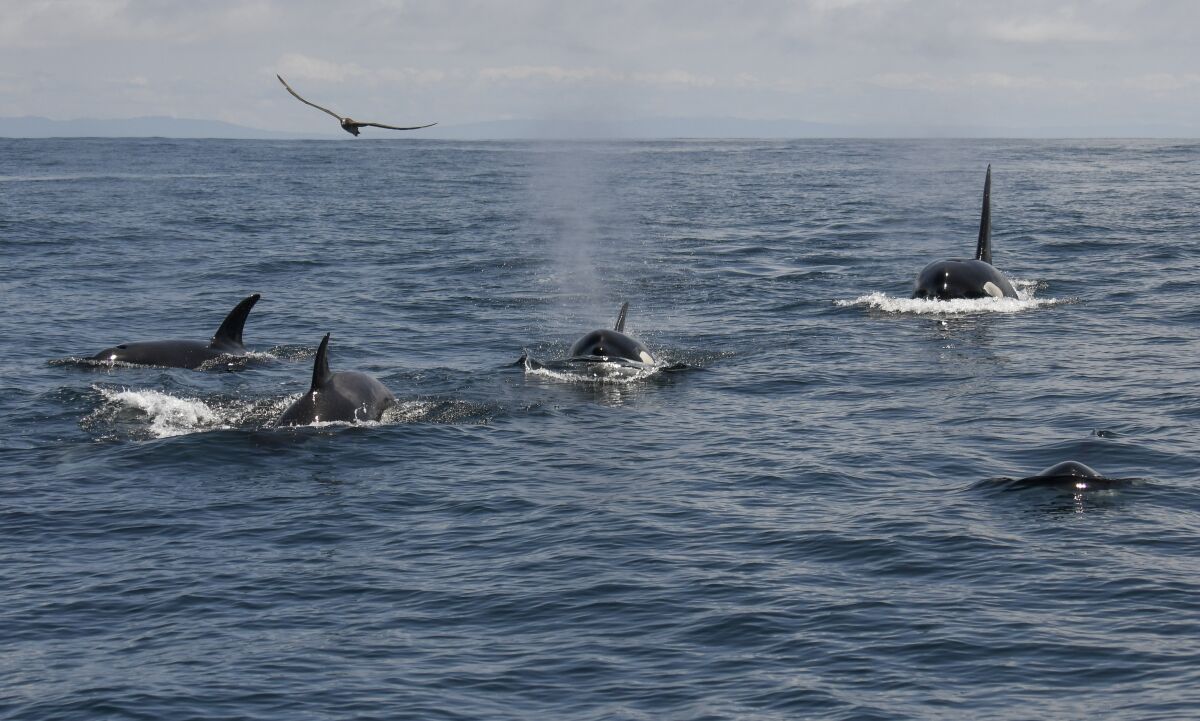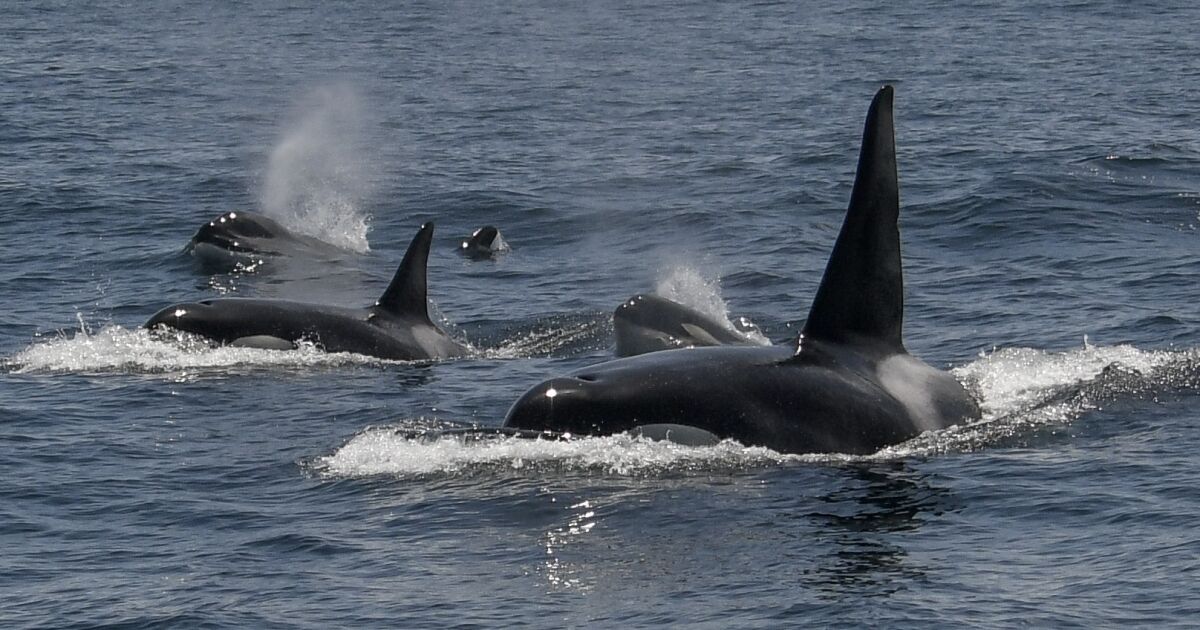Michael Pierson, a naturalist for the nonprofit eco-tourism organization Oceanic Society, has traveled from the San Francisco coast to the Farallon Islands many times during peak whale-watching season.
But on May 7, he decided to deviate from the usual course.
“It really worked in our favor,” Pierson said.
Pierson and others spotted a few humpback whales in the distance, but then discovered an unusually large group of orcas.
Off the coast of California, orcas are most commonly seen in the deep canyons of Monterey Bay, about 100 miles south, said Nancy Black, a marine biologist with Monterey Bay Whale Watch. But they are known to travel between Southern California and Southeast Alaska.
“It’s amazing being able to understand the range that these animals are covering, and where they’re spending the majority of their time,” Pierson said.
Between 20 and 24 killer whales were spotted near the Farallon Islands on May 7, possibly a meeting of six or seven families, or matrilines, celebrating the spoils of a good hunt, Pierson said.
“Their bellies are full, and they tend to be in a little bit better of a mood when they’re nice and stuffed,” he said.
Marine mammal migration season is at its peak in California, but spotting a pod larger than four or six orcas near the islands is a rare treat. The tourists on the Oceanic Society boat happened upon a happy scene, but hours earlier there was likely a gruesome sight.
Transient orcas, the most common ecotype of killer whales in the North Pacific, hunt pinnipeds — marine mammals with flippers, such as sea lions and harbor seals.
The orcas may have been drawn to the Farallon Islands around the time sea lions and seals arrive to give birth.
(Michael Pierson / Oceanic Society)
The orcas may have been drawn to the Farallon Islands to prey on sea lions and seals that arrive at the beaches to give birth.
“Many of them are coming to the islands this time of year looking for some pinnipeds to turn into a potential meal,” Pierson said.
Black, who is also director of the nonprofit California Killer Whale Project, said orcas prefer Monterey Bay because it is the only place on the West Coast that has deep waters close to the shore. The canyons allow orcas to sneak up on gray whale calves migrating to Alaska in spring, in what is the most dangerous part of their journey, she said.
Killer whales may also be seen in “hot spots” like the Farallon and Channel islands.
Some orcas travel from great distances, said Black, who noted that four “exotic” Canadian killer whales were spotted for the first time in Monterey Bay on Monday and could be headed to Southern California.
Photos taken during encounters aid researchers in studying individual orcas and pods without disrupting their habitats. According to Pierson, individual killer whales can be identified by the unique shape and markings of the dorsal fin.
The California Killer Whale Project has used photos to identify the orcas that travel past California and has followed one family for four generations.
Female orcas live 60 to 80 years, while males live 50 to 60.
“We haven’t even been studying them as far as their lifespan can be,” Black said.
Pierson said the Oceanic Society spotted some familiar fins during the May encounter, such as CA51, also known as Bumper, a playful orca that likes to get close to boats. Bumper’s dorsal fin is “curled over ever so slightly,” with a notch missing near the center, he said.
The group also spotted orcas known to frequent the Oregon and Washington coasts.
Pierson thinks there are more orcas around the Farallon Islands than scientists see, but they tend to stick to the deeper waters of the continental shelf.
“Just like with people, some are going to be a little bit more shy and stay away from the boat. Others are going to be a little bolder and swim right up,” he said.

Killer whales near the Farallon Islands.
(Michael Pierson / Oceanic Society)
This story originally appeared on LA Times

